Description of self-fertile cherry varieties for the middle lane and the Samara region
Cherry trees need pollinators to ensure consistent yields, set and ripen on time. But what if, due to weather conditions, there are few insects? What will become of trees and flowers? In this case, gardeners prefer self-fertile varieties. What is self-fertility and which varieties are the best, we will tell in this article.
The content of the article
Self-fertile cherry - what is it
Self-fertile varieties bloom and produce crops regardless of the presence of pollinators - other plants and insects. They do not need wasps and bees, the neighborhood of other cherry varieties.
Gardeners appreciate self-fertile cherries because they independently form 50% of the total number of flowers, while partially self-fertile and self-fertile cherries give an average of 10%. Self-fertile varieties do not lose their ability to germinate in cool weather, they guarantee a stable yield.
Self-fertile cherry varieties for central Russia
The best self-fertile varieties for the middle lane are those that are not afraid of frost and cold weather, resistant to diseases, distinguished by large berries and juicy sweet pulp.
Large-fruited
Large cherries are used for winter harvesting and processing, and also eaten fresh... The size and shape of the berries depends on the region of cultivation: the further south the cherry grows, the more fruits grow. If the cherry has a thick skin, the berries are transported and used for long-term storage or sale.
Lyubskaya
A late-ripening cherry variety is grown in Bryansk, Samara, Lipetsk regions. Lyubskaya is characterized by winter hardiness and early maturity. Bushy trees with a weak spreading crown. During the fruiting period, the culture enters the second year with the moment of landing... The weight of one fruit is about 5 g, the shape is rounded heart-shaped. The color is dark red or burgundy, there are many subcutaneous dark spots.
Deep red pulp, juicy... The taste is sweet and sour, the flesh is dense with a small bone, which is easily separated. The peduncle is long and thin. It is recommended to use Lyubskaya for processing. Productivity - from 10 to 25 kg per plant per season.
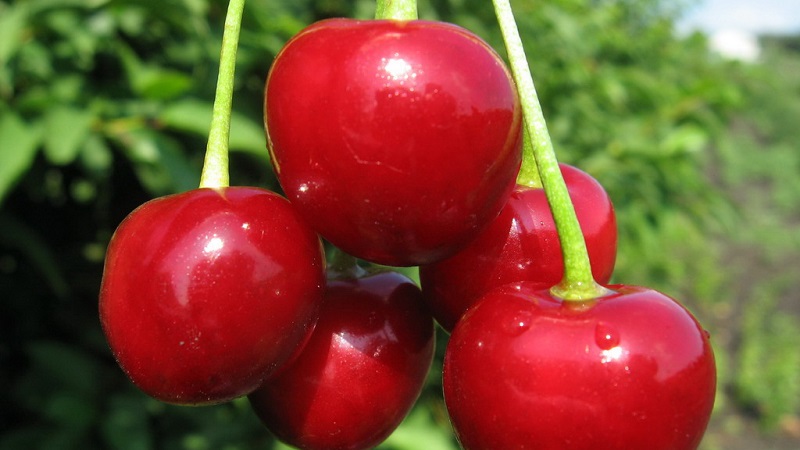
Rossosh black
The trees reach a height of 4 m, the crown is dense and spreading. Due to the large size of Rossosh Black, a lot of free space is required... Fruit weight - from 4 to 5 g, round shape, color from maroon to black. The pulp is dark red, juicy and tender, the taste is sweet and sour. Gardeners rate palatability 4.5 out of 5.
The variety is planted in the Central Black Earth Region. Of the advantages, a stable yield and resistance to coccomycosis are distinguished.
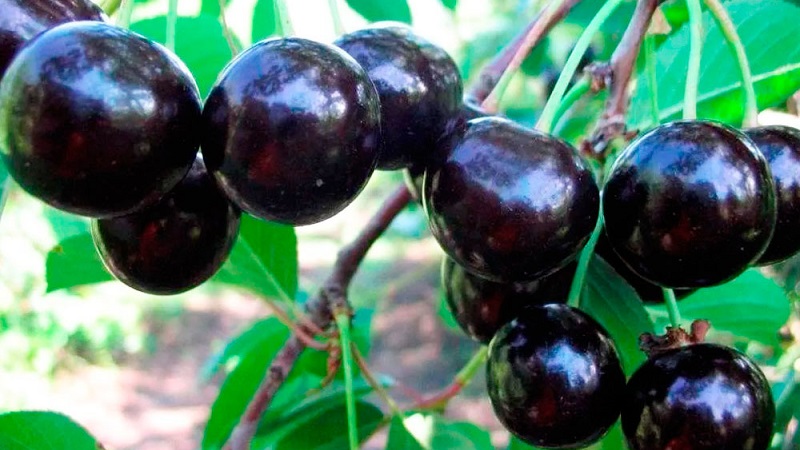
Fad
Mid-season dessert variety... The tree is medium-sized, the crown is dense, round-oval. The leaves are dark green, wrinkled. The berries are flat-round, the weight of one is about 5.1 g. The peel is dense, the color is rich burgundy, the surface is glossy. The pulp is juicy, the juice is dark red, the taste is sweet and sour. Tasting score - 4.7 points out of 5. Productivity - about 6 kg per tree per season.
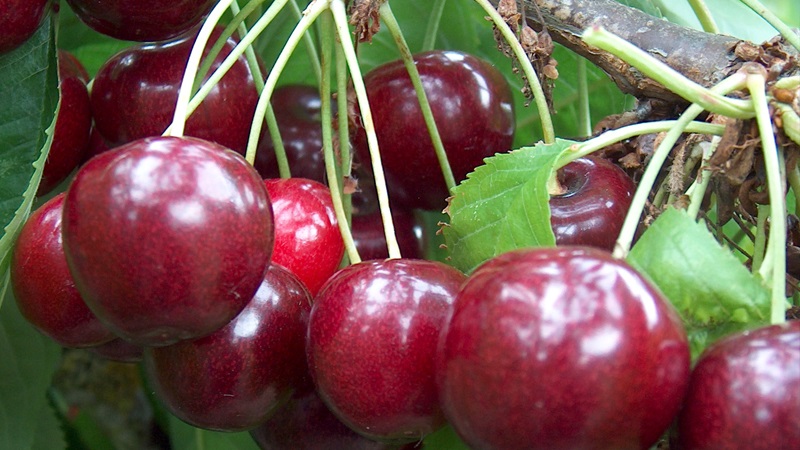
The variety is fast-growing, unpretentious and resistant to sudden changes in weather... It is versatile in application, famous for its attractive commercial qualities.
Attention! Without proper and balanced nutrition, self-fertile cherries slow down in growth, the fruits do not gain weight and taste. For fertilizers, gardeners use siderates, humus, compost, manure, chicken droppings. Feed the plant is sprayed 2-3 times over the summer, in spring and autumn to protect against diseases. For this, a solution of copper sulfate or the drug "HOM" is used.
Winter hardy
In the middle lane, frosts are frequent, due to which cherries may die... This is especially true for young trees 1-2 years old. It is recommended to choose varieties that can withstand temperatures as low as -35 ° C.
Amorel pink
Early ripe winter-hardy variety... The tree is medium-sized with a semi-spreading crown, up to 3 m high. Fruit weight - up to 4 g, round shape, thin skin, dark cherry. The pulp is tender, with a small bone, the taste is sweet and sour. A thin stalk is firmly attached to the berries. Amorel pink bears fruit stably, yield - up to 10 kg per tree. Berries differ in keeping quality, are rarely damaged by pests, and are universal in use. They are popular with gardeners from Siberia and the Urals.
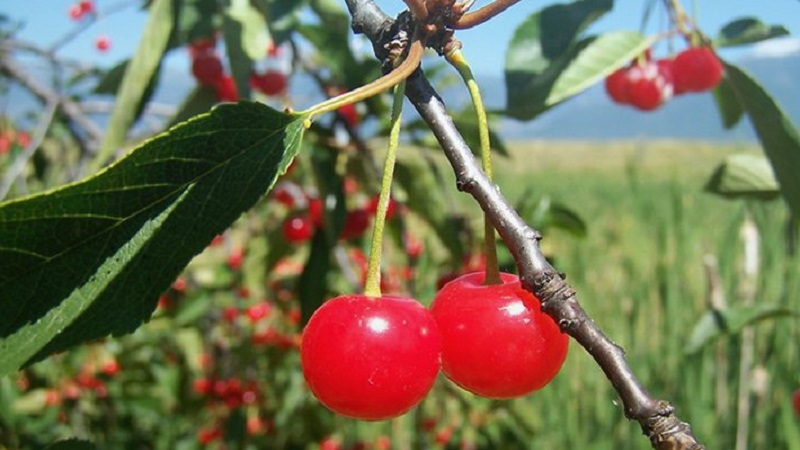
Worker of Tatarstan
The medium-early ripening variety is characterized by winter hardiness and increased resistance to coccomycosis. The bush is medium-sized, its height is about 2.5 m. The fruits are flat-round, the weight of one is 3-4 g. The rind is glossy, the color is maroon. The pulp is of medium density, juicy, sweet-sour taste. The stone is round, easily separated from the pulp.
Cherry Worker of Tatarstan is recommended for planting in the Middle Volga region and other areas of central Russia.
Griot Rossoshansky
Medium early and highly self-fertile variety. The tree is tall, the crown is spreading. Griot Rossoshansky enters the fruiting period 3-4 years after planting. The berries are rounded-flattened, the weight of one is about 4 g. The skin is maroon, almost black. The pulp is sweet and sour, tender and pleasant to the taste, medium density. Round bone with a flat base. Productivity - from 10 to 16 kg per plant per season.
Due to wet separation, the main purpose of the crop is processing. Among the disadvantages of the variety, poor transportability and keeping quality of fruits are noted.

Undersized
A low-growing, or bush cherry, not only gives gardeners a tasty harvest, but also decorates the site... Such trees require less planting space, they are easier to form a crown and cut off shoots.
Lighthouse
The height of a semi-spreading plant is no more than 2 m. The foliage is small, the crown is rare. Cherry is fast-growing; it begins fruiting in the third year after planting. Blooms from late May to early July. Fruits are round, weighing 4-6 g. The rind is thin, glossy, dark red color. The pulp is juicy, the taste is pleasant, sweet with sourness.
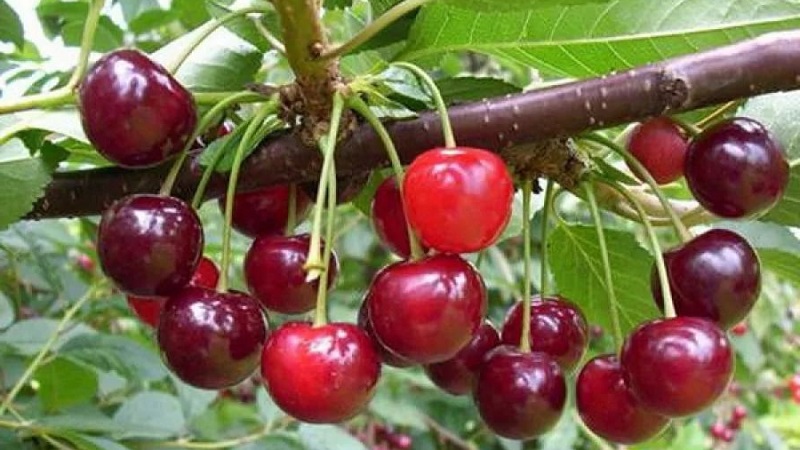
The advantages of the variety include drought resistance, winter hardiness, versatility in application.... It is not recommended to overexpose cherries on the bushes, since the fruits are prone to cracking. The yield, depending on the growing region, varies from 15 to 25 kg per plant per season.
Annushka
An early ripe variety yields a harvest by the end of June or early July. Bushes are small, medium-sized shoots. The berries are large and round, the weight of one reaches 5 g. The pulp is sweet-sour taste, color is bright red. The separation from the stalk is dry, so the crop is transportable. The peel of the fruit is firm.
Annushka rarely gets sick, however, with a lack of feeding, she is affected by rust and cercosporosis. The best yield is shown if garden cherries are planted nearby. It takes root well in the Moscow region.
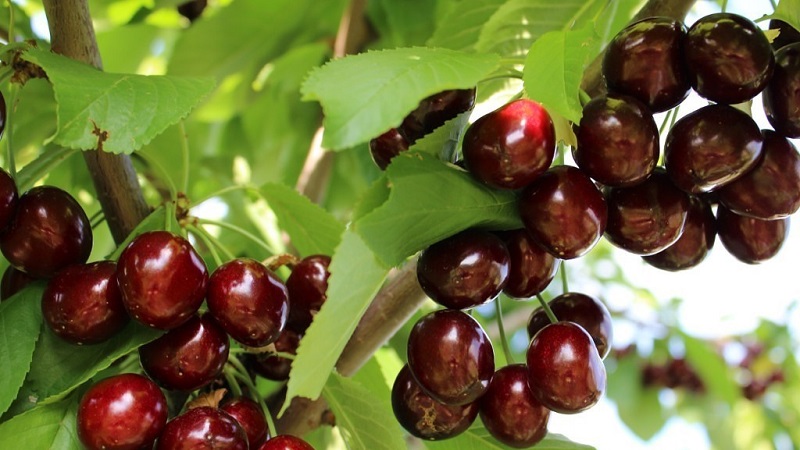
Youth
Low-growing cherry, winter-hardy... The ripening period is early, the application is universal. The tree is small, bushy type. The crown is of medium density, drooping. Fruits are broadly round, weighing from 4 to 5 g. The skin is burgundy and smooth, the stalk is dry. The pulp is dense and juicy, with a rich red hue.Molodezhnaya has a pleasant taste, with a refreshing sourness.
The variety is resistant to frost, the berries hang on trees for a long time, do not fall off and do not crack.
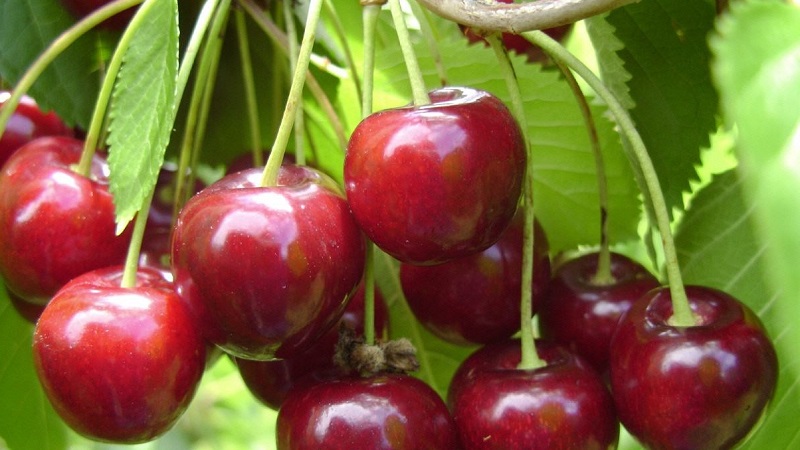
Attention! Bushy cherry varieties bear fruit on last year's growths. For compact plants to produce stable yields, it is important to prune them correctly. Gardeners remove the shoots that grow inside the crown. It is also recommended to remove branches that are too long, even if they already have berries on them. Correct and regular pruning is the key to a good harvest.
The best varieties of self-fertile cherries for the Samara region
The Samara region is characterized by cold and long winters, hot and dry summers... Gardeners for planting in the region choose frost-resistant and drought-resistant self-fertile varieties. Proper care of them and adherence to the rules of agricultural technology ensure a stable yield.
The sweetest
One of sweet varieties for the Samara region - Volochaevka... The tree is medium-sized, the crown is spherical, the density is medium. Fruits are small, weight - from 2 to 3 g, classic cherry color. The pulp is red, the taste is sweet and juicy, with a pleasant sourness.
Volochaevka bears fruit for 3-4 years after planting. Harvested from 20 to 30 July. For planting Volochaevka choose spacious and sunny areas. The variety is unpretentious in care; the main thing is to observe the regime of watering and feeding.
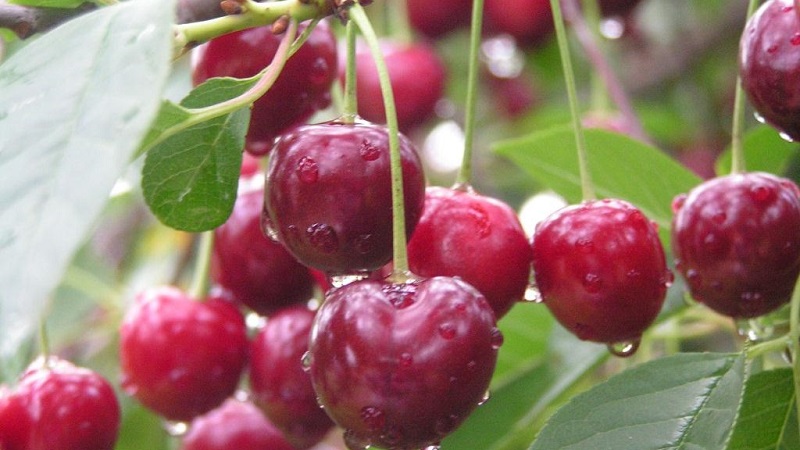
Another popular variety is Tamaris... Medium late and frost-resistant, resistant to coccomycosis, universal in use. The tree is bushy, undersized. The weight of a round fruit is from 3 to 5 g. The skin is burgundy, the stalk is long, the separation is semi-dry. The pulp is tender and juicy, the taste is dessert. The bone is easily separated from the pulp. Tamaris bears fruit for 2-3 years after planting. Harvested in late July or early August.
The most productive
Cherry yield is influenced by soil and weather conditions, planting site and compliance care rules... The Shokoladnitsa cherry is distinguished by a good yield. Bears fruit in the fourth year after planting. The tree is medium-sized, the crown is raised, the density is medium. Fruits are flat-rounded, black and burgundy, glossy. The pulp is red, the taste is cherry-cherry, sweet with a slight sourness.
Shokoladnitsa is resistant to rust and powdery mildew, rarely suffers from coccomycosis. The crop is harvested in the second half of July.
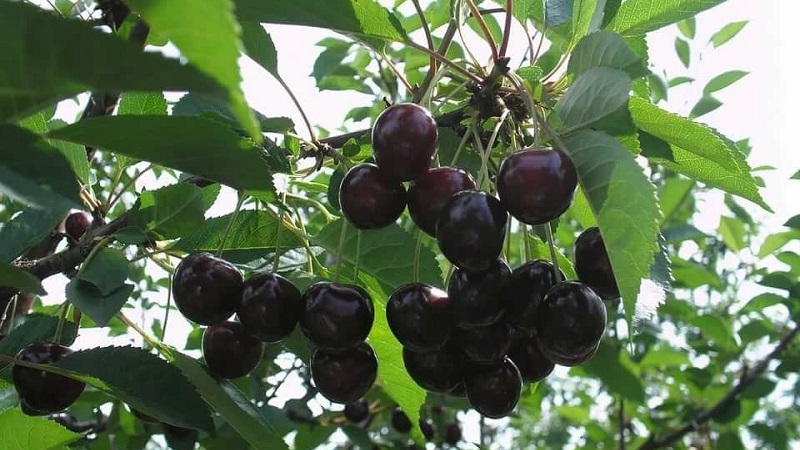
Also, self-fertile Garland cherry is chosen for planting in central Russia. The plant is tall - up to 4 m. The crown is round-oval, medium density. The berries are juicy and sweet and sour, spherical, the weight of one is from 4 to 6 g. The variety is distinguished by its transportability and long shelf life, the fruits ripen together.
Depending on the conditions, gardeners annually collect from 9 to 20 kg of beautiful berries from one bush. Some are eaten fresh, some are sent for processing or frozen.
Conclusion
Self-fertile varieties are early, medium and late. Most of them are frost-resistant and have strong immunity, therefore they take root in central Russia. Cherry Mayak, Shokoladnitsa, Tamaris, Lyubskaya, Oddity pleases gardeners with a stable harvest without the help of pollinators and other varieties.
It is recommended to plant the plant in the black soil, in spacious and light areas. Care consists of watering, fertilizing and shaping trees. Self-fertile varieties begin to bear fruit 3-4 years after planting. Berries are used for processing, storage or fresh consumption.